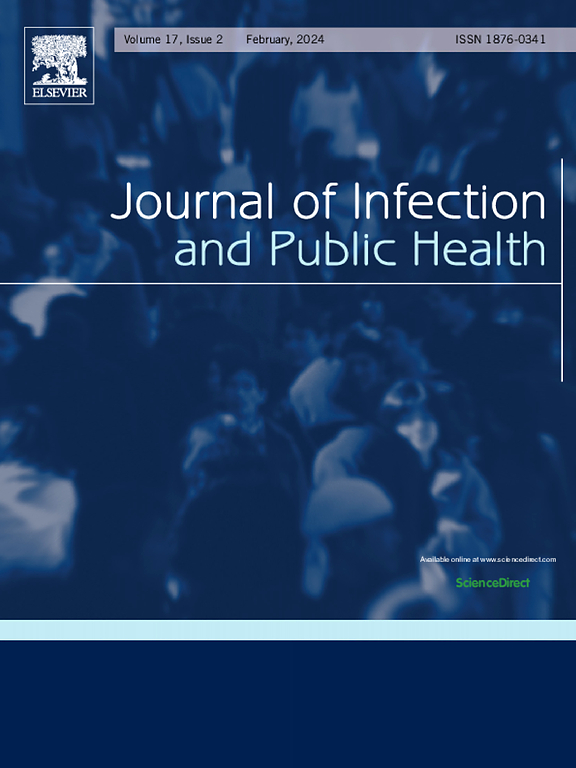COVID-19大流行期间呼吸器的颗粒过滤效率
IF 4
3区 医学
Q1 INFECTIOUS DISEASES
引用次数: 0
摘要
呼吸器是一种必不可少的医疗设备,对防止人与人之间的空气传播疾病至关重要。本研究介绍了由治疗用品管理局(TGA)对澳大利亚供应的呼吸器的颗粒过滤效率(PFE)性能进行的一项调查,这些呼吸器在2019冠状病毒病大流行期间被列为澳大利亚治疗用品注册(ARTG)的医疗器械,或从其他司法管辖区提供给TGA进行合规性测试。方法采用TGA开发的快速筛选PFE方法对实际生产的400批口罩进行检测。TGA通过统计功率分析来分析呼吸器满足其声称的过滤效率的能力,该统计功率分析根据所声称的PFE标准、制造国家、纳入ARTG的时间以及手术与非手术呼吸器的声明进行区分。在检测的口罩批次(n = 400)中,70% %符合预先设定的符合性标准。结果表明,当与GB 2626:2006的呼吸器进行测试时,符合标准42 CFR Part 84、AS 1716:2012、GB 19083: 2010和EN 149:2001+ A1:2009的呼吸器之间的PFE差异具有统计学意义(p <; 0.05)。手术呼吸器与非手术呼吸器的PFE差异无统计学意义(p >; 0.05)。本研究的结果强调了确保呼吸器在制造商发布之前根据其声明标准达到其声称的PFE水平的重要性。进一步的研究应侧重于调查呼吸保护装置的影响及其在临床环境(如医院)中使用一系列呼吸保护装置对雾化颗粒的功效。本文章由计算机程序翻译,如有差异,请以英文原文为准。
Particle filtration efficiency of respirators during the COVID-19 pandemic
Background
Respirators are an essential medical device vital to prevent the transmission of airborne illness between persons. This study presents an investigation conducted by the Therapeutic Goods Administration (TGA) into the particle filtration efficiency (PFE) performance of respirators supplied in Australia that were included as medical devices in the Australian Register of Therapeutic Goods (ARTG) throughout the COVID-19 pandemic or supplied to the TGA from other jurisdictions for compliance testing.
Methods
A total of 400 real-world batches of respirators were tested against a rapid-screen PFE method developed by the TGA. The TGA analysed a respirator’s ability to meet its claimed filtration efficiency with a statistical power analysis differentiated by the claimed PFE standard, country of manufacture, time of inclusion into the ARTG and respirators with surgical against non-surgical claims.
Findings
Of the tested batches of respirators (n = 400), 70 % were compliant with the pre-set compliance criteria. The results indicate statistically significant PFE differences (p < 0.05) between respirators claiming the standards 42 CFR Part 84, AS 1716:2012, GB 19083: 2010 and EN 149:2001+ A1:2009 when tested against respirators claiming GB 2626:2006. There were no observed significant differences between the PFE of surgical and non-surgical respirators (p > 0.05).
Interpretation
The findings of this study highlight the importance of ensuring respirators meet their claimed PFE level based on their claimed standard prior to manufacturer release. Further studies should be focussed on investigating the effect of respiratory protection devices and their claimed efficiency in clinical settings such as hospitals against aerosolised particulates using a range of respiratory protection devices.
求助全文
通过发布文献求助,成功后即可免费获取论文全文。
去求助
来源期刊

Journal of Infection and Public Health
PUBLIC, ENVIRONMENTAL & OCCUPATIONAL HEALTH -INFECTIOUS DISEASES
CiteScore
13.10
自引率
1.50%
发文量
203
审稿时长
96 days
期刊介绍:
The Journal of Infection and Public Health, first official journal of the Saudi Arabian Ministry of National Guard Health Affairs, King Saud Bin Abdulaziz University for Health Sciences and the Saudi Association for Public Health, aims to be the foremost scientific, peer-reviewed journal encompassing infection prevention and control, microbiology, infectious diseases, public health and the application of healthcare epidemiology to the evaluation of health outcomes. The point of view of the journal is that infection and public health are closely intertwined and that advances in one area will have positive consequences on the other.
The journal will be useful to all health professionals who are partners in the management of patients with communicable diseases, keeping them up to date. The journal is proud to have an international and diverse editorial board that will assist and facilitate the publication of articles that reflect a global view on infection control and public health, as well as emphasizing our focus on supporting the needs of public health practitioners.
It is our aim to improve healthcare by reducing risk of infection and related adverse outcomes by critical review, selection, and dissemination of new and relevant information in the field of infection control, public health and infectious diseases in all healthcare settings and the community.
 求助内容:
求助内容: 应助结果提醒方式:
应助结果提醒方式:


